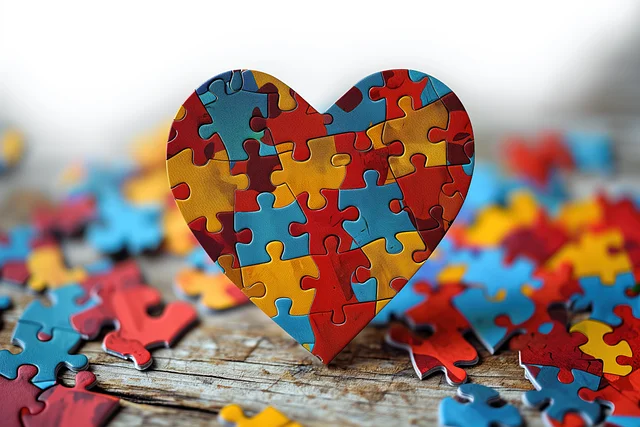What Is Level 2 Autism:Autism Spectrum Disorder (ASD) is a broad neurodevelopmental disorder. Within this spectrum, Level 2 Autism, or “requiring substantial support”, is a more severe form of autism impacting communication, behavior, and adaptability.
In this comprehensive guide, we’ll be examining what is Level 2 Autism, what does it look like, what are the challenges it presents, and—most importantly—how to give the support that allows individuals to flourish.
To understand the full scope of the autism spectrum, it’s essential to start with the basics. You can read our foundational guide: What Is Autism? Discover the Truth Behind Autism Spectrum Disorder in 5 Key Points
Understanding What Is Level 2 Autism
Level 2 Autism is the middle category in the three-level model of ASD, in the DSM-5 definition.These individuals are defined by:
- Having significant social communication difficulties.
- Having evidence of observable repetitive behavior.
- Having significant support with various aspects of daily life.
They tend to have a higher level of independence than Level 3 Autistic individuals, but will also require repetitive assistance and organization-based environments in order to successfully navigate daily living.
Key Level 2 Autism Characteristics
- Dominant social impairments in spite of support.
- Repetitive/restrictive behavior that interferes with daily functioning.
- Struggling to adapt to changes or transitions.
- Limited communication skills compared to neurotypical peers or Level 1 ASD peers.

While Level 2 autism falls in the middle of the spectrum, some individuals experience profound needs. For more insight, discover our [Extreme Autism: 7 Powerful Insights to Understand and Support Profound Needs]
Characteristics of Level 2 Autism
People with Level 2 Autism may present with a mix of the following behavior and developmental patterns:
1. Social Communication Challenges
- Restricted initiation of conversation.
- Struggle with the use or comprehension of nonverbal communication (tone of voice, facial expressions).
- Avoiding eye contact or physical contact.
2. Repetitive Behaviors
- Hand-flapping, rocking, or repetitive speech (echolalia).
- Insistent routine and ritual adherence.
- Resist small changes in environment or schedule.
3. Sensory Sensitivities
- Overreaction to lights, sounds, textures, or odors.
- May seek or avoid certain sensory input to relax..
4. Intense, Narrow Interests
- Single-minded interest in particular topics like maps, routines, or equipment.
- Difficulty in diverting attention from favorite topics.

Challenges Faced by Individuals with Level 2 Autism
Experiencing the world with Level 2 Autism is always a challenge. These challenges manifest in a number of areas:
1. Social Integration
- Trouble forming peer relationships.
- Having difficulty interpreting body language, sarcasm, or social etiquette.
2. Communication Barriers
- Delayed or restricted speech.
- Maybe uses AAC (augmentative and alternative communication) devices.
3. Behavioral Rigidity
- Fixed routines are required sudden change causes distress.
- May respond with tantrums or shutdowns when faced with uncertainty.
4. Emotional Regulation
- Extreme emotional reactions.
- Trouble with expressing feelings in socially approved manners.
Tools & Resources for What Is Level 2 Autism
To understand what is Level 2 Autism is to understand how to provide meaningful support. Below are effective interventions and tools:
1. Behavioral Therapies
- Applied Behavior Analysis (ABA): Increases specific behaviors and skill sets.
- Cognitive Behavioral Therapy (CBT): Allows emotional regulation and anxiety management.
2. Speech and Language Therapy
- Uses both expressive and receptive communication.
- May include sign language, picture exchange systems, or AAC devices.
3. Occupational Therapy
- Creates daily living activities such as dressing, feeding, and hygiene.
- Inserts sensory-friendly accommodations into routines.
4. Social Skills Programs
- Teaches interaction in group environments, such as turn-taking, sharing, and empathy.

Step-by-Step Guide: How to Support Someone with Level 2 Autism
Step 1: Establish a daily routine.
Step 2: Implement changes slowly and with the aid of pictures.
Step 3: Use plain language or pictures for support.
Step 4: Identify sensory triggers and modify the environment.
Step 5: Celebrate a small win each step forward is personal.
To better support children with Level 2 Autism, make sure to apply these effective teaching strategies for autism that are tailored for their specific needs.
Key Takeaways about What Is Level 2 Autism
- Level 2 Autism requires high levels of support but has huge potential.
- Early intervention, well-organized support, and individualized care plans are essential.
- Restriction rather than empowerment should underpin all support measures.
Resources for Families & Caregivers
Here are trusted resources to guide you on your journey:
FAQ: What Is Level 2 Autism?
1. Can an individual with Level 2 Autism live independently?
With the right support, most can live semi-independently, though ongoing assistance is typically required.
2. Is Level 2 Autism curable?
Autism is not something to be “cured” but supported. Interventions are aimed at improving quality of life and functioning.
3. How is Level 2 different from Level 1 Autism?
Level 2 has more support needs for behavior and communication than Level 1.
4. What causes Level 2 Autism?
There is no one cause. It’s a combination of environmental and genetic factors that impact brain development.
5. How do I know if someone has Level 2 Autism?
A professional diagnosis from a developmental pediatrician, neurologist, or psychologist is required.
The genetic origins of autism also raise many questions. Find out more: Is Autism Genetic? Understanding the Role of Genetics in Autism
Conclusion: Enabling Lives through Insight
Understanding what is Level 2 Autism isn’t defining challenges it’s enabling potential. With empathy, awareness, and the right tools, families and professionals are able to offer helping pathways that enable individuals with Level 2 Autism to have full lives of meaning and depth.

